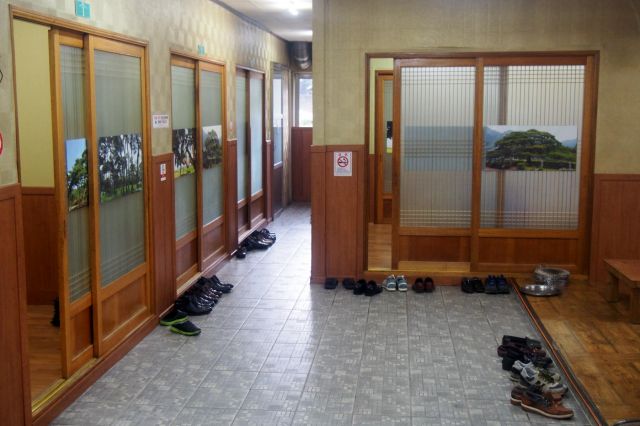[HanCinema's Korea Diaries] "Gyeongju" June 17th-20th
 By William Schwartz | Published on
By William Schwartz | Published on

Ah, Gyeongju Station (경주역). Not to be confused with Gyeongju Bus Terminal (경주버스터미날). Yeah...I don't especially like how "station" is always used interchangably with "역" because in English at least, station can also mean buses. Word to the wise- train stations and bus stations are not generally that close to each other in South Korea, so make sure you know in advance which one you're going to, especially if you're taking the train, since train schedules tend to be a lot more erratic than bus schedules.
Advertisement
...But anyway, I just thought it was interesting that apparently Gyeongju Station still uses the same typeface it did for "Reply 1988". Nice to know they could change the spelling system and still have enough sense to keep that fabulous font.

Now this, this is the Gyeongju Historic Area (경주역사지구). It's located at about the midpoint between the bus terminal and the train station, just south of downtown. The reason for the generic name is because the entire area is just a giant park consisting entirely of huge mound tombs, several of which have been around long enough to have trees growing out of them. Most of them are unmarked- it would probably be a bit of a hassle figuring out exactly who was buried where. I'm guessing that, like the big mound park in Daegu, these are mostly just generic nobles.

And then there's Gyeongju's other big landmark- the Hitler building, where tourists can get all their Hitler memorabilia, remembering the young beautiful Hitler who danced his way to glory among a flower mob of beatniks.
...I'm kidding, really. No, this is just random graffiti that has idolized Hitler because the imagery looks cool. Flowers and were most likely added in later by someone who actually knew something about Hitler as a form of protest. I'm not sure about the "LOVE", since it looks like the same shade of black as the rest of Hitler. Maybe the whole thing is just some form of intentional "ironic" art. It's just hard to tell since everyone (including me) feels compelled to make stupid jokes every time Hitler shows up out of context.

These are doors to the private sections of a fairly well-known Gyeongju restaurant. Here are the more embroidered ones, closed this time.
I'm a real sucker for floor-seating inside decent sliding doors. I wish all restaurants had them. Alas, they're not terribly space efficient.

Here, yet another private citizen's mound. These burial mounds are a bit of an obsession of mine at this point, but there are so many mounds in Gyeongju that the comparison between personal and historical ones is just all the more striking. Gyeongju, located as it is in a rural area, has a lot of people who genuinely do not care that nobody buries the dead in mounds anymore. This is their tradition and the South Korean government will have to pry it from their cold, dead fingers.
It's funny, though, that to modern eyes these mounds seem like such an "old" thing, from darker times of ancestor worship. But are we really so different? We dedicate highways, stadiums, libraries, even national currency to famous people living or dead. Is a giant mound really any more egotistical than that? I think that's probably why I'm more drawn to the small mounds rather than the large ones. They're a bigger effort from fewer people.
The royal mounds, by contrast, tend to be highly dignified. And they're also usually located in the middle of nowhere. So if you want to visit King Bubheung's Tomb (법흥황릉), be prepared to stare intently at the side of the road for tiny brown signs that will lead the way. Like this one.
It's not as scary as it looks. There's another tiny brown sign on the side of the actual big road, the one that has buses.
...Well, OK, those little brown signs point to a completely different tomb. The one for Queen Seondeok. Pictured here-
My point is, these little brown signs are everywhere and they always point to completely different historical sites. So watch out for them.
Article by William Schwartz
 William Schwartz
William Schwartz
Staff writer. Has been writing articles for HanCinema since 2012, having lived in South Korea from 2011 to 2021. He is currently located in the Portland metropolitan area. William Schwartz can be contacted via william@hancinema.net, and is open to requests for content in future articles.













